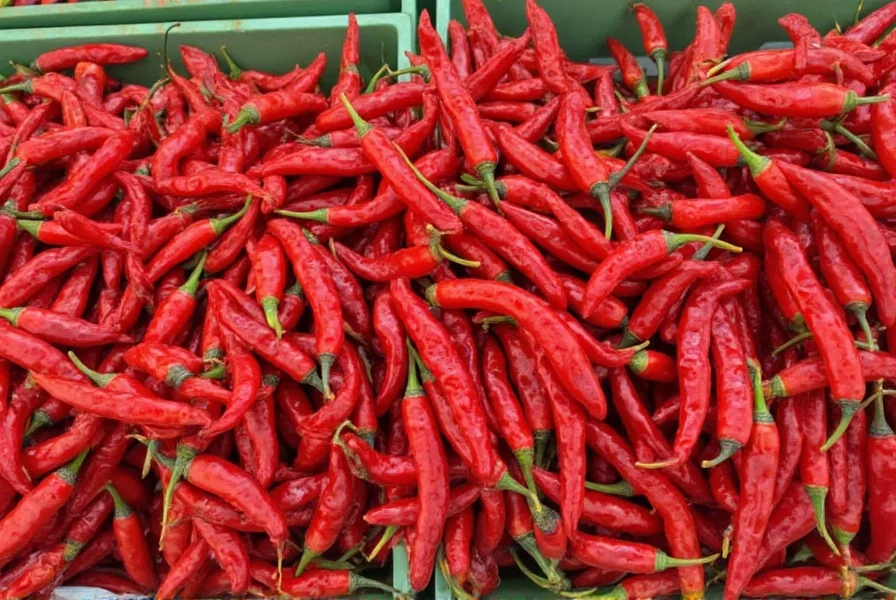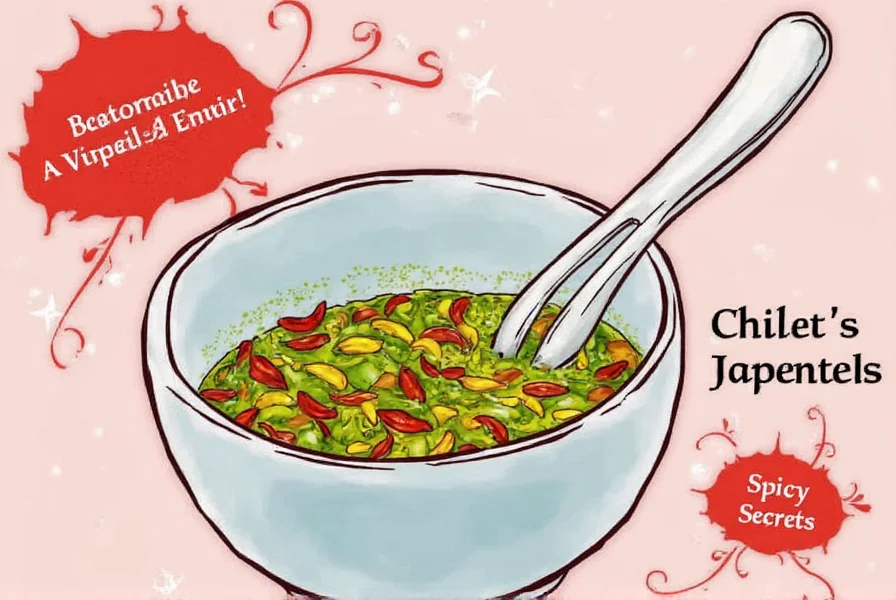Table of Contents
Introduction to Japanese Chili Peppers
Japanese chili peppers, scientifically known as Capsicum annuum var. takanotsume, are a distinct variety of chili pepper developed in Japan. Despite the name "Japanese," the species originated in the Americas but was cultivated into its current form in Japan. These small, curved peppers are prized for their intense heat and complex flavor profile, making them a staple in Japanese cuisine and increasingly popular worldwide.
Unlike many chili peppers marketed as "Japanese" in global markets, true Japanese chili peppers (takanotsume) have specific characteristics that set them apart. They are not a generic term for any small red chili but refer to a particular cultivar with standardized heat levels and culinary uses. Understanding their true nature ensures accurate usage in cooking and avoids confusion with similar peppers from other regions.
Understanding Japanese Chili Varieties
True Japanese chili peppers (takanotsume) are a single standardized variety. However, they are often confused with other peppers due to regional naming differences. Here's a clear breakdown:
| Type | Heat Level (Scoville) | Flavor Profile | Common Uses |
|---|---|---|---|
| Takanotsume (True Japanese Chili) | 50,000 – 100,000 | Fruity, slightly smoky, with citrus undertones | Shichimi togarashi spice blend, stir-fries, ramen toppings, pickling |
| Common Misidentifications | Varies | Varies | Often confused with: |
| Chile de Árbol (Mexican) | 15,000 – 30,000 | Grassy, earthy, sharp heat | Salsas, moles, Mexican cooking |
| Cayenne Pepper | 30,000 – 50,000 | Pungent, straightforward heat | Hot sauces, seasoning blends, general cooking |

Important note: "Chile japonés" is a Spanish term often used incorrectly for Mexican peppers like chile de árbol. True Japanese chili peppers are not grown in Latin America and have no "amarillo" or "negro" varieties. The table above clarifies common confusions to help you identify authentic products.
Practical Tips for Using Japanese Chili Peppers
When working with authentic Japanese chili peppers (takanotsume), follow these evidence-based tips:
- Start with Small Quantities: Their heat is concentrated—use 1-2 whole peppers per serving initially. They're significantly hotter than jalapeños but less extreme than habaneros.
- Use Fresh or Dried: Fresh peppers offer bright, fruity notes ideal for salsas and garnishes. Dried peppers (commonly sold whole or ground) develop deeper smokiness and work best in spice blends like shichimi togarashi.
- Remove Seeds for Controlled Heat: While seeds contain capsaicin, the heat is evenly distributed in takanotsume. Removing seeds reduces heat by only 15-20%—focus on adjusting pepper quantity instead.
- Balance with Umami: Pair with soy sauce, miso, or fish sauce to complement their fruity notes. Dairy (yogurt, cheese) or citrus (yuzu, lime) effectively counterbalance heat without masking flavor.
- Roast for Complexity: Lightly roasting dried peppers before grinding enhances their citrus undertones. Avoid high heat to prevent bitterness.
Professional chefs emphasize: "Takanotsume's heat is clean and short-lived compared to cayenne. It builds gradually and dissipates quickly, making it perfect for layered spice profiles." Always taste before adding more.
Cooking Ideas with Japanese Chili Peppers
Authentic Japanese chili peppers (takanotsume) shine in traditional and modern applications:
- Shichimi Togarashi: Blend dried takanotsume with sesame seeds, orange peel, nori, and ginger. This iconic Japanese spice mix elevates noodles, rice bowls, and grilled meats.
- Ramen Topping: Thinly slice fresh peppers and add to ramen just before serving. Their heat integrates seamlessly with rich broths without overwhelming.
- Spicy Yuzu Dressing: Infuse oil with dried takanotsume, then mix with yuzu juice, rice vinegar, and honey for a bright salad dressing.
- Kimchi-Style Pickles: Ferment cucumbers or radishes with takanotsume, garlic, and gochugaru for a Japanese-Korean fusion condiment.
- Chocolate Truffles: Infuse cream with ground dried takanotsume (1/4 tsp per cup) for dark chocolate truffles. The heat contrasts beautifully with sweetness.
For authentic results, source true takanotsume peppers—substitutes like cayenne or chile de árbol will alter flavor profiles significantly. Traditional Japanese recipes specifically call for takanotsume due to its unique heat structure.
Buying Guide for Japanese Chili Peppers
Ensure you're purchasing authentic Japanese chili peppers (takanotsume) with these verified guidelines:
- Look for "Takanotsume" on Labels: Reputable suppliers will specify "takanotsume" or "Japanese bird's eye chili." Avoid generic terms like "Japanese chili" or "chile japonés."
- Check for Certification: Products from Japan often carry JAS (Japanese Agricultural Standard) certification. For imported products, verify origin labels (e.g., "Grown in Japan").
- Fresh Peppers: Should be bright red, firm, and slightly curved (like a bird's beak). Avoid soft or wrinkled specimens.
- Dried Peppers: Vacuum-sealed packaging is essential. Authentic dried takanotsume has a uniform deep red color and crisp texture—no mold or discoloration.
- Heat Verification: Reputable brands list Scoville ratings (50,000-100,000). If unavailable, check for third-party lab testing results.

Recommended authentic products:
- Japanese Takanotsume Dried (JAS Certified): Ideal for spice blends and cooking. Heat level 75,000 SHU average. Available from Japanese specialty retailers.
- Fresh Takanotsume (Seasonal): Best for garnishes and fresh applications. Look for "Shinshu" or "Nagano" region origin for highest quality.
- Pre-Made Shichimi Togarashi: Contains authentic takanotsume as the primary ingredient. Avoid blends with excessive fillers or artificial additives.
Never purchase "chile japonés" labeled products from Latin American suppliers—they're typically chile de árbol or cayenne. True Japanese chili peppers are exclusively cultivated in Japan.
Frequently Asked Questions
What are Japanese chili peppers and where do they actually come from?
Japanese chili peppers (takanotsume) are a specific cultivar of Capsicum annuum developed in Japan. While the chili pepper species originated in the Americas, this variety was selectively bred in Japan during the Edo period. They are not native to Japan but were cultivated there for centuries. The name "Japanese" refers to their development location, not origin. They are exclusively grown in Japan today and are not found in Latin American agriculture.
How hot are Japanese chili peppers compared to other common chili peppers?
True Japanese chili peppers (takanotsume) range from 50,000 to 100,000 Scoville Heat Units (SHU). This places them between cayenne peppers (30,000-50,000 SHU) and Thai bird's eye chilies (50,000-100,000 SHU). They're significantly hotter than jalapeños (2,500-8,000 SHU) but milder than habaneros (100,000-350,000 SHU). Crucially, their heat is "cleaner" and dissipates faster than cayenne, making them more versatile in cooking.
What's the difference between fresh and dried Japanese chili peppers?
Fresh takanotsume have higher moisture content and brighter, fruitier notes ideal for salsas and garnishes. Dried takanotsume develop deeper smokiness and concentrated heat, making them perfect for spice blends like shichimi togarashi. Dried peppers also have 3-4x more capsaicin by weight. Storage-wise: fresh peppers last 2 weeks refrigerated; dried peppers retain quality for 12-18 months in airtight containers away from light.
How can I reduce the heat of Japanese chili peppers in my cooking?
The most effective method is adjusting quantity—use 1/4 of a pepper instead of a whole one. Removing seeds reduces heat by only 15-20% since capsaicin is distributed throughout the flesh. For balanced heat, pair with umami-rich ingredients like miso or soy sauce, or use dairy (yogurt, cheese) to neutralize capsaicin. Never soak peppers in water, as this leaches flavor without significantly reducing heat.
What are good substitutes for Japanese chili peppers if I can't find them?
True substitutes are limited due to takanotsume's unique heat profile. For spice blends, use Thai bird's eye chilies (same heat range but sharper flavor). For fresh applications, serrano peppers (10,000-23,000 SHU) are milder but lack the fruitiness. Avoid cayenne or chile de árbol—they have different heat structures and will alter recipes. Always check labels: "Japanese chili" on non-Japanese products usually indicates mislabeled cayenne or chile de árbol.
How should I store Japanese chili peppers to keep them fresh?
Fresh peppers: Store unwashed in a paper bag in the refrigerator's crisper drawer for up to 2 weeks. Do not use plastic bags, as moisture causes mold. Dried peppers: Keep in airtight glass containers away from light and heat. For long-term storage (1+ years), freeze in vacuum-sealed bags. Never refrigerate dried peppers, as humidity degrades quality. Always check for moisture before using stored peppers—any softness indicates spoilage.
Conclusion
Japanese chili peppers (takanotsume) are a distinct, authentic variety cultivated exclusively in Japan. Their clean heat and fruity complexity make them invaluable in traditional and modern cuisine. By understanding their true characteristics—avoiding common misidentifications like "chile japonés"—you can harness their full potential in cooking.
When sourcing, prioritize verified Japanese suppliers and look for "takanotsume" on labels. With proper handling and usage, these peppers transform dishes with balanced heat that enhances rather than overwhelms. Whether in shichimi togarashi, ramen, or innovative desserts, authentic takanotsume offers a culinary experience unmatched by generic "Japanese" chili products.
Next time you shop for chilies, seek out true Japanese chili peppers—they're the key to unlocking authentic flavors in your kitchen.










 浙公网安备
33010002000092号
浙公网安备
33010002000092号 浙B2-20120091-4
浙B2-20120091-4